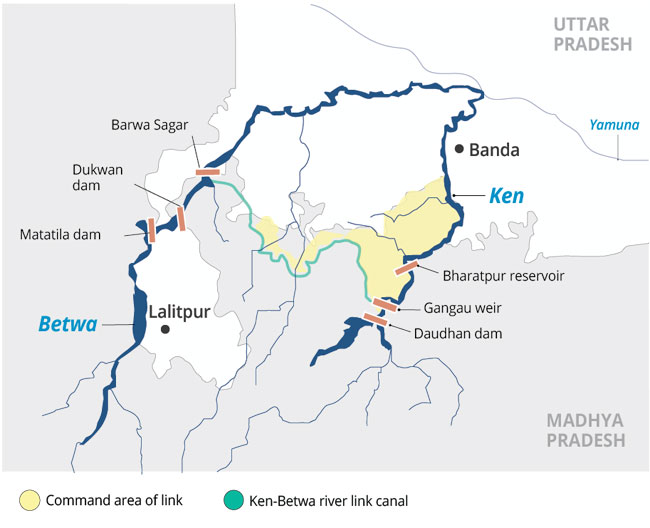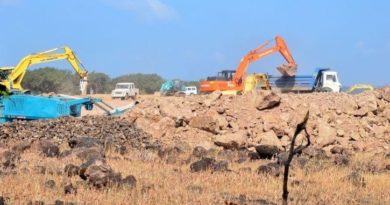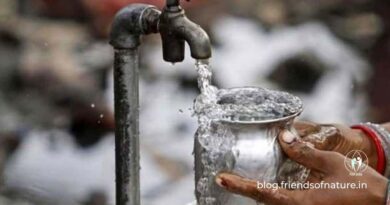No one needs the Ken-Betwa Link Project
On March 22, Union Jal Shakti Minister Gajendra Singh Shekhawat signed a tripartite agreement for the project implementation with Madhya Pradesh Chief Minister Shivraj Singh Chouhan and Uttar Pradesh Chief Minister Yogi Adityanath. Ken-Betwa River Link Project plans to connect Ken river in Madhya Pradesh with Betwa in Uttar Pradesh. After work starts, the Rs 37,611-crore project will take eight years to complete.
Himanshu Thakkar observes that the project will damage Bundelkhand.
The people of Bundelkhand certainly need better water access and management. But the Ken-Betwa Link Project (KBLP), estimated at a cost of Rs 38,000 crore, is not the solution. The project will, on the contrary, lead to huge adverse impacts in the region.
The Supreme Court-appointed Central Empowered Committee (CEC), in a most remarkable report of August 30, 2019, had raised fundamental questions not only on the appropriateness of the wildlife clearance given to the project, but also the viability, optimality and desirability of the project. It estimates that the KBLP will lead to a loss of “10,500 hectares of wildlife habitat” in the Panna Tiger Reserve. The project developers are yet to provide a detailed response to the report and the court is yet to hear the matter.
The detailed project report of KBLP prepared by the project proponent National Water Development Agency (NWDA) says: “The main objective of the Ken-Betwa link project is to make available water to water-deficit areas of the upper Betwa basin… ” However, the upper Betwa region is outside the Bundelkhand and has higher rainfall than the region. Most areas of Bundelkhand that have been promised water are already being supplied by existing projects. There is a great scope for improving the water availability in Bundelkhand from existing resources and projects, which can be achieved faster and much cheaper. Both the forest advisory committee (FAC) and the CEC conclude that the NWDA has not examined the alternatives to the project.

The Panna district, one of the least irrigated areas of Madhya Pradesh, will, on the other hand, suffer maximum destruction, while getting very little benefit from the project. Downstream, Uttar Pradesh’s Banda district too stands to suffer adverse impacts that have been flagged by state officials.
The project is based on the premise that the Ken, the smaller of the two rivers, has surplus water. But the hydrological data that is claimed to support that premise is not in public domain, and has never been put to scrutiny by any independent credible agency. In this context, the FAC made a suggestion that has never been implemented: “A team of independent experts on surface water hydrology, drawn from leading scientific institutions, should have been requested to examine the hydrological aspects of the Ken-Betwa river link”.
The CEC report raises the question about the neglected water needs of the Upper Ken basin, a tribal area which this project is likely to keep permanently backward.
In effect, the Ken basin and Bundelkhand are being asked to pay the price for past blunders in overdesigning the lower Betwa projects. “This faulty planning in development of irrigation facilities in the lower Betwa basin at the cost of Upper Betwa basin is proposed to be now rectified by substitution of water from Ken,” the CEC report says.
Moreover, the KBLP does not have the final forest clearance, and its wildlife clearance has been opposed by the SC-empowered CEC. A challenge to its environment clearance is pending before the National Green Tribunal. The Prime Minister endorsed the project on March 22, when the UP and MP Chief Ministers signed a second MoU on the project, almost 16 years after the first MoU. Should the Prime Minister be endorsing a project that does not have all the statutory clearances, when a legal challenge to its available clearances is pending before various judicial bodies?
The CEC report’s findings on the impact of the KBLP is at odds with the shoddy Environment Impact Assessment (EIA) of the project, based on which it was given environment clearance in August 2017. Even the forest advisory committee has noted the factual errors and inadequacies in the EIA-EMP.
The recommendation of environmental clearance for the project by the Expert Appraisal Committee (EAC) of the MoEF in December 2016 was an exercise in manipulation. The EAC for river valley projects, in its five earlier meetings till August 2016 where this project was discussed, had raised a number of questions. But the MoEF reconstituted the EAC and the new committee, in its very first meeting, cleared the KBLP without resolving the issues raised in earlier meetings.
The Stage I forest clearance from May 27, 2017 is based on a number of conditions that will require fundamental restructuring of the current project, including change in project costs, benefits and impacts and hence will require a fresh appraisal. Such conditions include the stipulation that the proposed 78 MW powerhouse shall not be constructed in the forest area. In the lean season, the entire inflow to the proposed reservoir will be released for the downstream river and flow in the downstream river will be maintained throughout the year till Ken river reaches Yamuna river, and no building material is to be taken from the forest area.
The minutes of the Forest Advisory Committee meeting held on March 30, 2017 notes: “The construction of the dam in site within Panna Tiger Reserve is not the best possible option… the total project cost has not included the cost of ecosystem services lost due to the diversion of forest… If the cost of ecosystem services lost is considered than the benefit/cost ratio will be very less, making the project economically unviable.”
The FAC concludes: “In an ideal situation, it would have been better to avoid KBLCP… Certainly it will not be in the interest of wildlife and the overall well-being of the society in the long term.”
There has been compromised decision making at every step of the project. Why then does the government push for it?
This was originally published by The Indian Express




